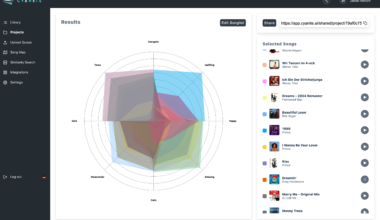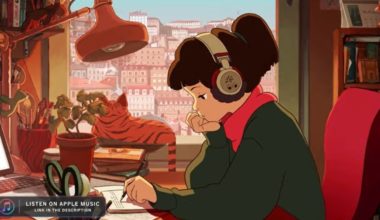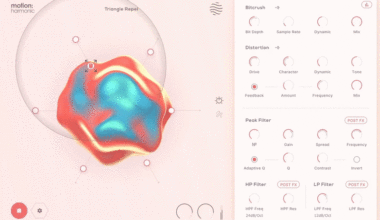
In the realm of music production, there’s a unique genre that stands out for its distinct approach to sound quality and composition – Lo-Fi music. This genre, known for its low fidelity or “Lo-Fi,” harks back to a time when music was more about the feel and less about the polish. It’s a genre that’s not afraid to show its rough edges, to let the hiss of a tape or the crackle of a vinyl record become part of the music itself. Its uniqueness and simplicity are why many music producers want to learn how to make Lo-Fi beats.
Lo-Fi music is akin to a well-loved vintage photograph. It’s not about the sharpness of the image or the perfection of the colors. It’s about the warmth, the nostalgia, and the stories that the image evokes. Similarly, when you’re learning how to make Lo-Fi beats, it’s about creating a mood, an atmosphere that transports the listener to a different time and place.
This guide is designed to help you navigate the world of Lo-Fi music production. Whether you’re a seasoned producer looking to explore a new genre or a beginner just starting out, this guide will provide you with the knowledge and tools you need to learn how to make Lo-Fi beats. We’ll explore the key elements of a Lo-Fi beat, discuss the tools and techniques you can use, and walk you through the process of creating a Lo-Fi track from start to finish. So, let’s dive in and start our journey into the world of how to make Lo-Fi beats.
What is Lo-Fi Music?
Lo-Fi music, short for “low fidelity,” is a genre that embraces the charm of less-than-perfect sound quality. It’s a genre that’s not about achieving the crispest, cleanest sound, but about capturing a certain warmth and nostalgia that comes with imperfections in the audio.
In the world of music, “fidelity” refers to the exactness with which a sound or image is reproduced. High-fidelity sounds are crisp, clear, and highly detailed, while low-fidelity sounds are less detailed and may include elements that are typically considered imperfections in a recording. These can range from the crackle of a dusty vinyl record to the crunch of low bitrates in the digital realm.
When you’re learning how to make Lo-Fi beats, it’s important to understand that these ‘imperfections’ are not just accepted in Lo-Fi music, they’re celebrated. They’re seen as positive qualities that add character and depth to the music. The hiss of a tape, the warble of a vinyl record, the saturation of a vintage amplifier – these are all elements that can give Lo-Fi music its unique charm and appeal.
Lo-Fi music is often associated with a sense of relaxation and comfort. It’s the kind of music that’s perfect for chilling out, studying, or just unwinding after a long day. It’s not about being the loudest or the most intense, it’s about creating a vibe, a mood that listeners can sink into and lose themselves in.
In essence, learning how to make Lo-Fi beats is about understanding the beauty of imperfection and how to use it to create music that resonates on a deeply emotional level.
Key Elements for how to make Lo-Fi Beats
When learning how to make Lo-Fi beats, it’s essential to understand the key elements that make up this unique genre. These elements work together to create the distinctive sound and feel of Lo-Fi music.
How to make Lo-Fi Beats: Tempo and Beat
One of the defining characteristics of Lo-Fi beats is their slow tempo. Typically, Lo-Fi beats fall within the range of 60–90 beats per minute (bpm). This slow tempo contributes to the relaxed, laid-back vibe that Lo-Fi music is known for.
The beat itself is usually simple, with the kick, snare, and hi-hat playing key roles. The beats often have a “lazy” feel, which can be achieved by slightly delaying the snare track by a few milliseconds. This gives the beat a slightly off-kilter, relaxed feel that’s characteristic of the Lo-Fi genre.
How to make Lo-Fi beats: Chords and Sound Selection
The chords used in Lo-Fi beats are usually smooth, easy, and jazzy, often using Major 7th chords. These chords give the music a warm, nostalgic feel that’s perfect for the Lo-Fi genre.
Sound selection is another crucial element when you’re learning how to make Lo-Fi beats. It’s recommended to start with fitting drum samples and presets before opening up your DAW. Real instruments and effects like filters, saturation, distortion, and pitch are often used in sound design to create the unique Lo-Fi sound.
Adding Imperfections
In most genres of music, imperfections are something to be avoided. But in Lo-Fi music, they’re something to be embraced. Adding imperfections throughout the song can keep the music interesting and give it a unique character.
This can be done by sliding the drum notes just a little bit off the grid, adding small, occasional changes to the other instruments, and playing around with how the bassline fits. These imperfections add a human touch to the music, making it feel more organic and less mechanical.
EQ, Tone, and Saturation
The EQ and tone of Lo-Fi music are often adjusted to mimic the limited bandwidth of vintage radios by cutting off the lowest and highest frequencies. This gives the music a warm, vintage sound that’s characteristic of the Lo-Fi genre.
Distortion and saturation are used to make things sound dusty and old. These effects can add a layer of warmth and character to the music, enhancing the vintage feel.
Creating Space and Atmosphere
Creating a sense of space and atmosphere is a crucial part of making Lo-Fi beats. This can be achieved by adding a background layer with lots of reverb. This could be an atmospheric recording or sample that is drenched in reverb.
This background layer adds depth and texture to the beat, creating a sense of space that can make the listener feel like they’re in a different place. It’s this sense of atmosphere and space that can make Lo-Fi music so immersive and captivating.
In conclusion, understanding these key elements is crucial when learning how to make Lo-Fi beats. By mastering these elements, you can create your own unique Lo-Fi beats that capture the warmth, nostalgia, and relaxed vibe of this unique genre.
Making Your Own Lo-Fi Beats
Learning how to make Lo-Fi beats is a journey into the world of imperfections, nostalgia, and simplicity. It’s about understanding the key elements of the genre and how to use them to create your own unique sound. Here’s a step-by-step guide to help you get started:
Start with a Hip-Hop Drum Loop
Lo-Fi music draws heavily from hip-hop influences, especially its typical drum patterns. Start your beat with a simple hip-hop drum loop. Adjust the tempo to fit within the Lo-Fi range, typically between 60–90 bpm. Remember, the beats in Lo-Fi music often have a “lazy” feel, which can be achieved by slightly delaying the snare track by a few milliseconds.
Use Lo-Fi Instruments
Lo-Fi music often uses jazz-based instruments. Experiment with different sounds and find what works best for your beat. Real instruments and effects like filters, saturation, distortion, and pitch are often used in sound design to create the unique Lo-Fi sound.
Write Melodies and Harmonies
Once you have your drum loop and instruments, it’s time to write your melodies and harmonies. Remember, Lo-Fi music is all about simplicity and imperfections, so don’t worry about making everything perfect. The chords used in Lo-Fi beats are usually smooth, easy, and jazzy, often using Major 7th chords.
Use Lo-Fi Effects and Plugins
In the process of learning how to make Lo-Fi beats, the use of audio effects and plugins is crucial. These tools can help you achieve the distinctive Lo-Fi sound, adding warmth, depth, and character to your music. Here are some recommendations that you can find on Plugin Boutique:
- DopeSONIX LoFi: This plugin features 200 LoFi / Chill Hop / Ambient / Electronica inspired instruments. It’s treated with a variety of cool, vintage analog equipment and has built-in pitch, pan, glide, and volume controls. It also includes a classic-sounding reverb, flexible ADSR controls, and Hi & Lo pass filter.
- Super VHS by Baby Audio: Super VHS is a creative multi-effect module that allows you to instantly tap into 80s VHS era sounds. It’s perfect for adding a touch of tape-based nostalgia to your beats.
- Izotope Vinyl: Izotope Vinyl was one of the first lo-fi plugins around—and it’s completely free. Vinyl recreates all the charm of an old school LP, allowing you to add noise, pitch modulation, overdrive, bit reduction, ambience, and tape artifacts all in the same plugin.
- XLN Audio RC-20 Retro Color: Over half a decade after its release, the colorful RC-20 multi-effect plugin from XLN Audio remains a very popular choice for lo-fi producers. It includes six modules — “Noise,” “Wobble,” “Distort,” “Digital,” “Space,” and “Magnetic” — that you can use to shape your sound.
Remember, the key to using these plugins effectively is to experiment and find what works best for your beat. Don’t be afraid to tweak settings, try different combinations, and let your creativity guide you. After all, making Lo-Fi beats is all about embracing imperfections and creating a unique sound that resonates with listeners.
Use Lo-Fi Samples and Loops
Working with samples and loops is a common practice in Lo-Fi music production. These pre-recorded sounds can add depth and texture to your beats, and can also serve as a source of inspiration. Here are some recommendations that you can find on Splice and Loopmasters:
Splice Recommendations:
- Lush Lo-Fi by Origin Sound: This pack on Splice offers a wide range of Lo-Fi inspired instruments. It’s a great starting point for your Lo-Fi beat.
- Dusty Hip-Hop 2 by Sample Magic: This pack provides a collection of dreamy and Lo-Fi samples and loops, perfect for creating a laid-back vibe in your beats.
Loopmasters Recommendations:
- Lofi Breaks 2 by RV Samplepacks: This royalty-free Lo-Fi Hip Hop sample pack is compatible with most DAWs and is available in high fidelity formats. It features a range of Lo-Fi Hip Hop loops and one-shots.
- Reel To Reel – Vintage Lofi by Black Octopus: If you’re looking to incorporate some house elements into your Lo-Fi beats, this pack is a great choice. It’s filled with glitched-up electronics, manipulated melodies, and 8-bit beats.
Remember, when using samples and loops, it’s important to make them your own. Don’t be afraid to manipulate these sounds, add your own elements, and put your unique spin on them. After all, the beauty of making Lo-Fi beats is in the creativity and individuality you bring to the music.
Also, always ensure that the samples and loops you use are royalty-free to avoid any copyright issues. Here is our complete list of the best Lo-Fi sample packs.
The verdict on learning how to make Lo-Fi Beats
Embarking on the journey of learning how to make Lo-Fi beats is an exciting exploration into a genre that celebrates imperfections and nostalgia. This guide has walked you through the key elements of Lo-Fi music, from the slow tempo and simple beat to the use of vintage sounds and the addition of imperfections. We’ve delved into the importance of EQ, tone, and saturation in creating that distinctive Lo-Fi sound, and the role of space and atmosphere in crafting a beat that transports the listener to a different place.
We’ve also provided a step-by-step guide on how to make your own Lo-Fi beats, starting with a hip-hop drum loop, selecting the right instruments, writing melodies and harmonies, using Lo-Fi effects and plugins, and incorporating Lo-Fi samples and loops. Each of these steps is a crucial part of the process, and understanding them will equip you with the knowledge and skills to create your own unique Lo-Fi beats.
But remember, Lo-Fi music is all about embracing the beauty of imperfection. It’s about creating a mood, a vibe that resonates with listeners. So, as you embark on your journey of making Lo-Fi beats, don’t be afraid to experiment, to make mistakes, and to let your creativity flow.
In the end, learning how to make Lo-Fi beats is not just about mastering a genre—it’s about expressing yourself through music. So, grab your headphones, fire up your DAW, and start creating. Your journey into the world of Lo-Fi music production starts here.





